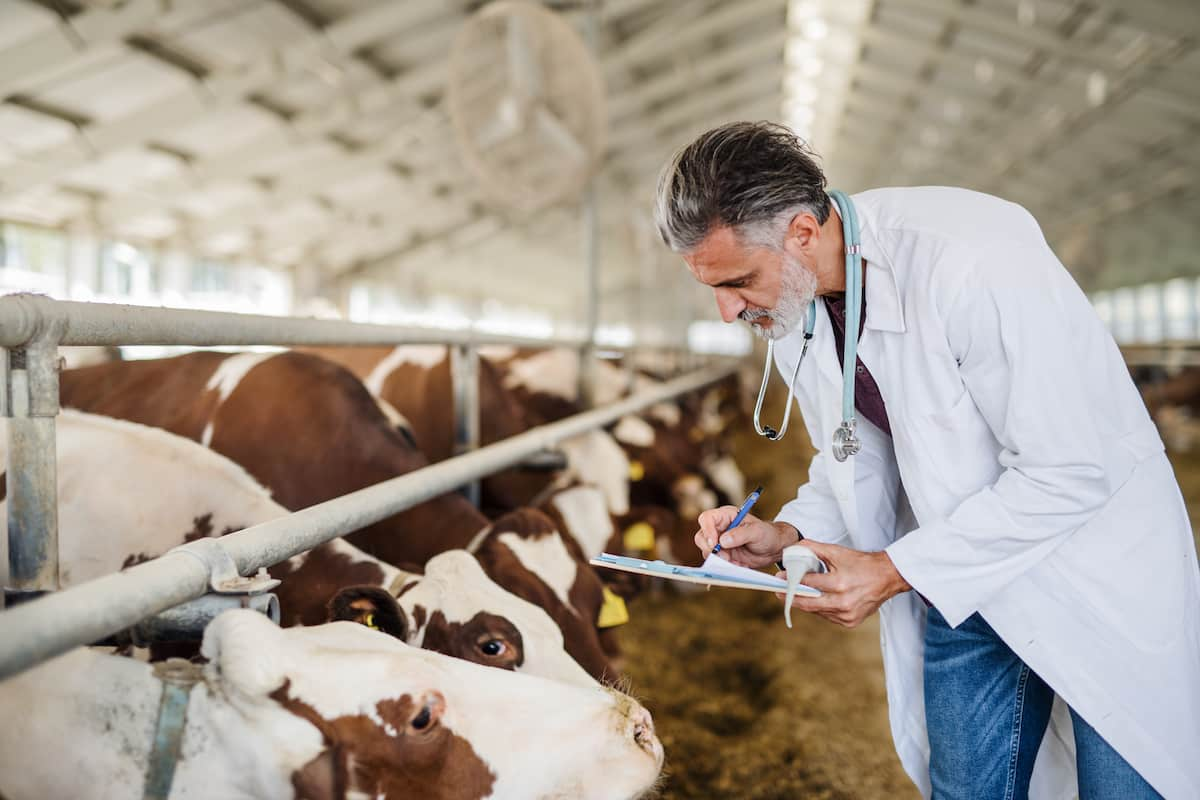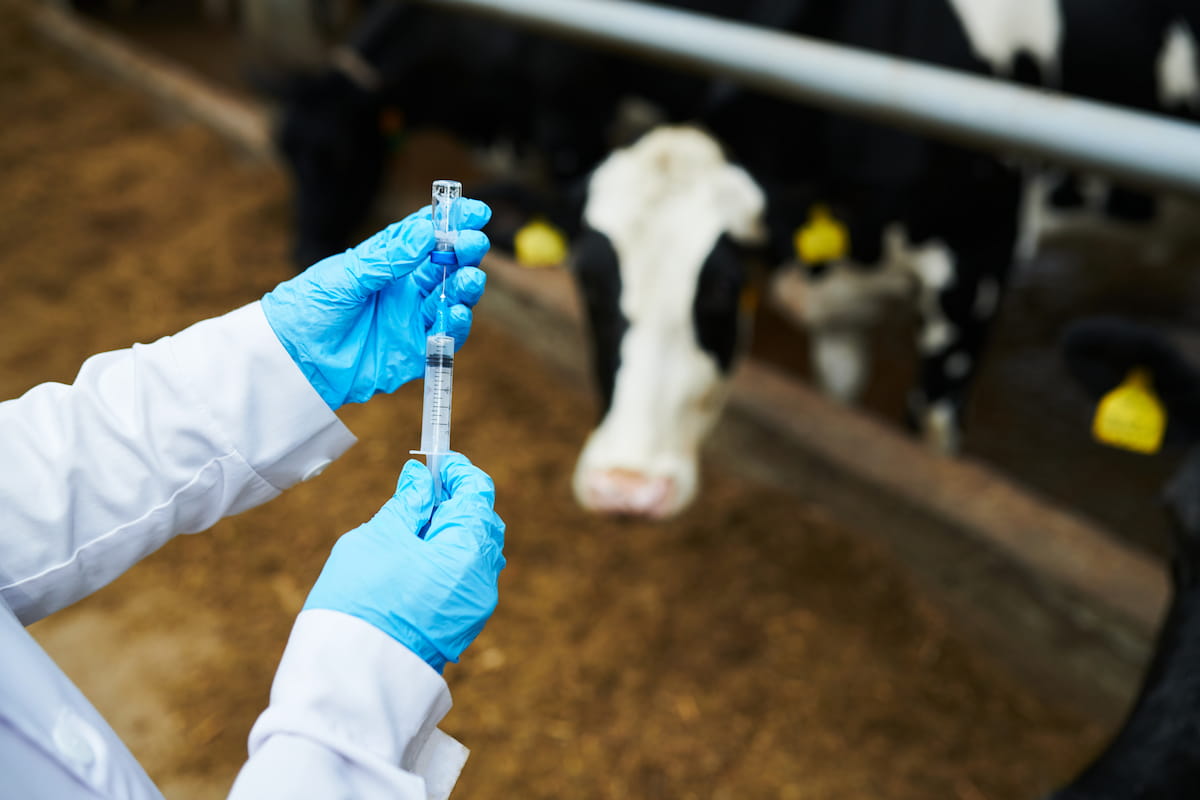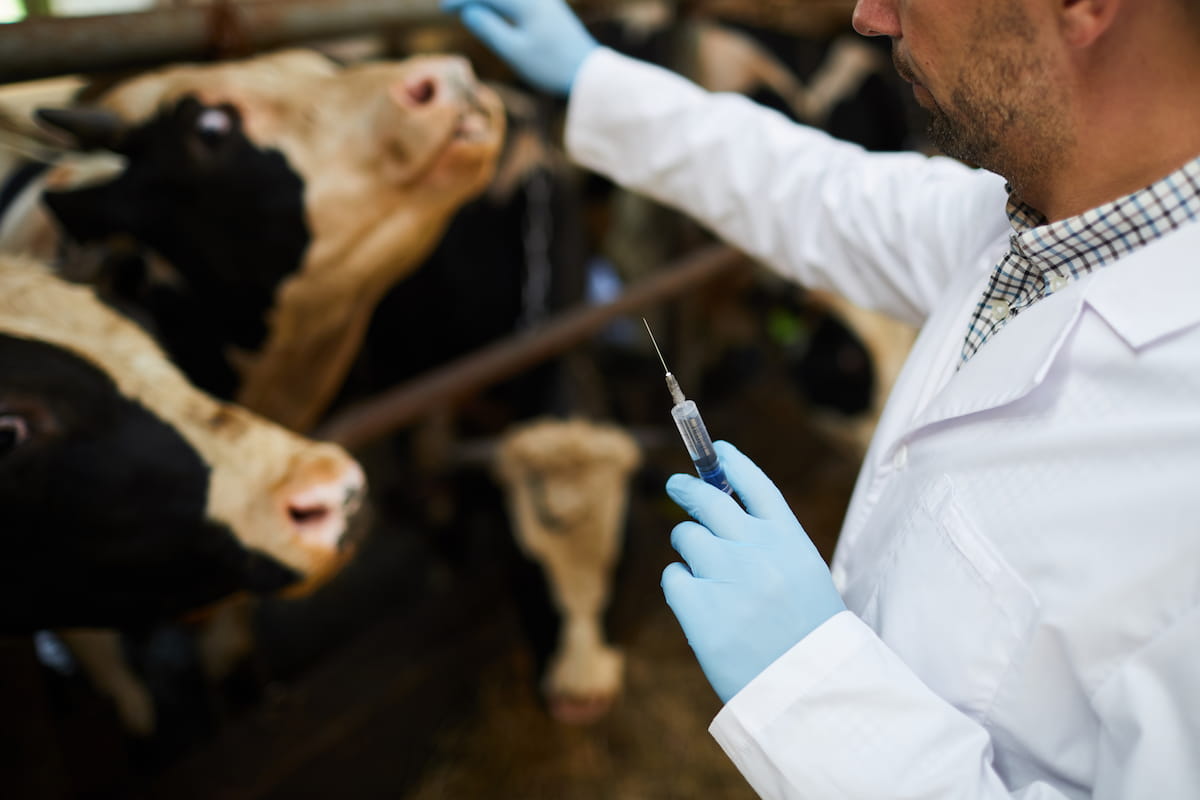Mastitis is an infection of the cow’s mammary glands (udder). It can be caused by injury or infection, usually from bacteria. Mastitis is a common disease in dairy cattle and can lead to decreased milk production, reduced calf growth, and decreased reproductive health.

There are five mastitis types: subclinical, clinical, acute, acute gangrenous, and chronic. Subclinical mastitis has no visible symptoms, while clinical mastitis causes redness and swelling. Acute gangrenous mastitis can cause permanent damage to the udder and can lead to death. Chronic mastitis is a recurring illness that is often caused by staph bacteria. Early diagnosis and treatment are important to prevent negative impacts on the cow’s health.
Mastitis Disease Management in Cattle
Causes of Mastitis Disease in Cattle
Mastitis in cattle is caused mostly by Staphylococcus, Streptococcus, and coliform bacteria, with viruses and fungi playing a minor role. These bacteria enter the teat canal and grow in the mammary gland, causing inflammation and the physical and pathological changes accompanying the condition.
Disease Cycle of Mastitis Disease in Cattle
Mastitis is a multifactorial disease caused by the interaction of host genetics, environmental factors, and infectious agents. The incidence of mastitis is influenced by herd-level factors such as farm management and hygiene practices, as well as cow-specific factors such as breed, stage of lactation, and previous mastitis history.
Improper mastitis prevention and control practices by farmers, as well as indiscriminate use of antibiotics, can lead to the development of antibiotic-resistant bacteria, posing a public health hazard through milk consumption. Factors such as lack of proper identification of the causative agent of mastitis can also contribute to the prevalence of mastitis in cattle.
What Are the Symptoms of Mastitis Disease in Cattle?
- Mastitis in cattle is characterized by inflammation of the udder, causing redness and swelling.
- The udder is hot, painful, and tender to the touch. Milk production may stop or be severely reduced, and the milk may be discolored and contain clots or a foul-smelling discharge.
- Body temperature, appetite, and mobility may also be affected. In severe cases, pus formation and dehydration can lead to weight loss and potentially death due to toxemia or bacteremia.
- Clinical signs of mastitis can vary depending on the severity of the disease and may range from no visible changes to severe swelling, pain, and mammary gland damage.
In case you missed it: Coccidiosis Disease Management in Chicken: Symptoms, Treatment, Prevention and Management of Disease

Diagnosis of Mastitis in Cattle
Mastitis in dairy cows is a common bacterial infection of the udder that can be diagnosed by
- One of the most common methods is the California Mastitis Test (CMT), which uses a chemical reagent that changes color in the presence of infection. To use the CMT, milk is collected from each of the cow’s four compartments and tested individually.
- A color change or gelling of the milk indicates the presence of mastitis. The other method is somatic cell testing, Which counts the number of white blood cells in milk.
- High white blood cell counts can indicate the presence of infection. Somatic cell counts are also used to detect subclinical cases of mastitis. It’s important to test all four compartments in a cow to diagnose and treat the infection effectively.
Treatment and Control of Mastitis Disease
Treatment and Control of Mastitis Disease cattle, the infected quarters should be stripped of milk and cleaned with saline and distilled water. Antibiotic therapy should be administered immediately and continued as per the antibiogram.
Mastitis Treatment Involves:
- Applying ice on the udder.
- Draining infected milk thrice a day.
- Using 5% phenol for hygienic disposal.
Strict milking procedures should be followed, and infected quarters should be dried up. Consult a vet for antibiotic treatment and prevent calves from suckling on infected teats.
Preventive and Mastitis Disease Management in Cattle
Preventing mastitis is crucial for the health of cattle. To minimize the risk of infection, It is critical to keep the cows clean and dry and to guarantee they are clean before entering the milking area. Using a fresh cloth or paper towel for each cow to clean the teats and ensure they are dry before milking. After milking, using a germicidal teat dip can help reduce the risk of infection. Additionally, feeding the cows after milking instead of allowing them to lie down immediately can prevent the entry of microorganisms into open teat canals.
Ideal Management Practices for Mastitis Disease in Cattle
- Hygiene is crucial in the milking process. All animals diagnosed with a positive condition should be milked last.
- Before milking, milkers must wash their hands and wear clean, disinfected white overalls.
- A separate, disinfected cloth should be used for each cow to wash the udder. The first stream of milk from each quarter should not touch the floor and should be collected in a designated container.
- Milkers should avoid contact with the initial stream of milk by not wetting their hands.
In case you missed it: Fowl Cholera Disease Management in Chicken: Symptoms, Treatment, Diagnosis and Prevention of Disease

Impact of Mastitis Disease on Cattle
This condition results in physical and pathological changes to the mammary tissue. It causes the infected milk to change in color and consistency and contain more leukocytes. The disease leads to reduced milk production and increased veterinary costs, causing severe economic loss to farmers. Mastitis is considered the most common and costly disease of dairy cattle worldwide.
The primary cause of the disease is the invasion of bacteria, fungi, yeasts, or possibly viruses that penetrate the teat canal and multiply in the mammary gland. If mastitis treatment doesn’t work, have the cow tested to determine the responsible bacteria and use a narrow-spectrum antibiotic. Don’t stop treatment early; check the milking process, use teat dip and sanitize equipment, and clean bedding. If all fails, the cow may have chronic mastitis, often seen in older cows, and may cost less to replace.
Conclusion
Mastitis is a common and serious disease in cattle that can significantly impact the health and productivity of dairy herds. Early detection and treatment of the disease are important, as well as implementing preventive measures such as maintaining clean and dry bedding and teats, using proper milking techniques, and providing proper nutrition. Proper management of the disease can help reduce the occurrence of mastitis and improve overall herd health.
- Beneficial Insects in Pest Management
- Natural Solutions for Pest Control in Flower Gardens
- Types of Fungicides Used in Agriculture
- Common Issues in the Fruit Development Stage of Pomegranate Farming
- Fruit Development Issues in Papaya: Easy Solutions and Treatment
- Soil-Borne Diseases and How to Protect Your Plants
- Practices to Prevent Disease Spread in the Garden
- From Wilted to Thriving: How to Treat Root Rot Naturally in Houseplants
- Natural Remedies to Cure Brown Spots on Fig Tree Leaves